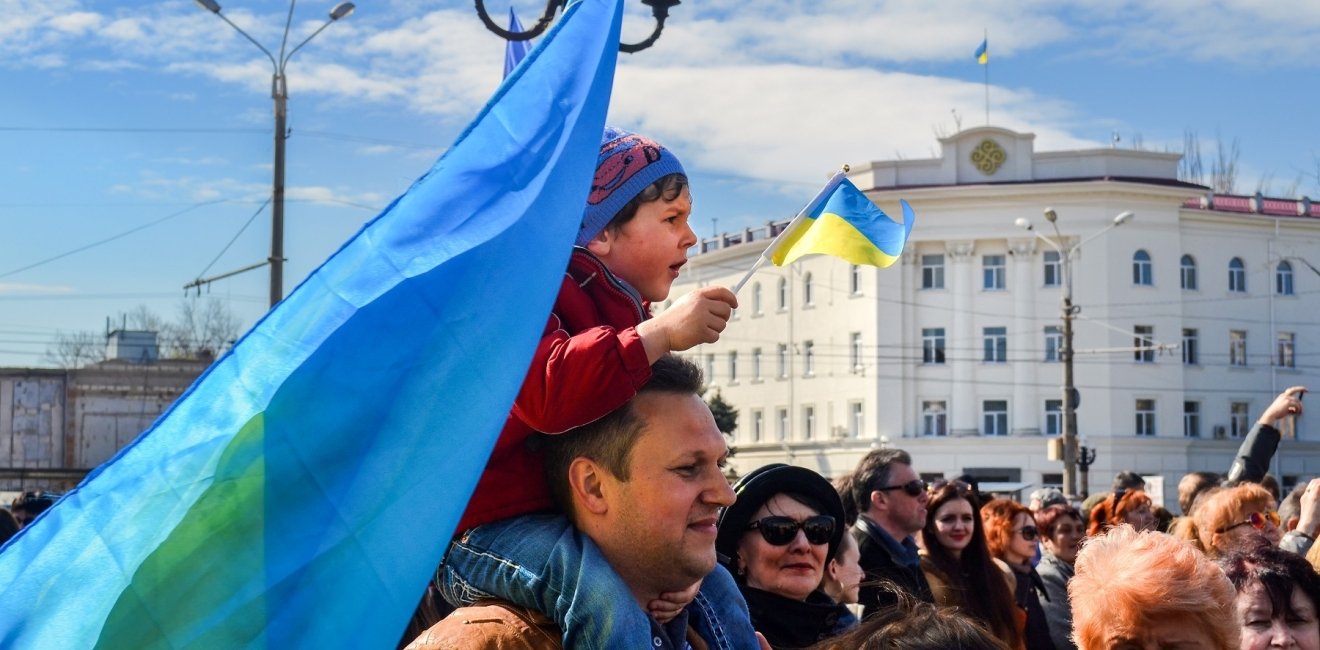
A blog of the Kennan Institute
BY MYKHAILO MINAKOV
The Russian war against Ukraine constitutes an existential threat to Ukraine. This threat can be seen in the risks to life of noncombatants, as happened particularly in Mariupol and Bucha. Forced hunger and the shelling of critical civilian infrastructure underscore the lethal nature of such risks and the extent to which Moscow is willing to go. Yet the threat is also to the Ukrainian commonwealth—to Ukraine’s statehood itself.
After the Kremlin’s attempt to swiftly execute regime change in Kyiv failed and the battle for Kyiv was won by Ukraine, Russia seems to have redirected its efforts to taking over the eastern and southern regions. Judging from Kremlin official statements, Russian propaganda, and practices in the temporarily occupied territories in the Donbas and in Kharkiv, Zaporizhzhia, and Kherson oblasts, Russia is preparing to further undermine, even destroy, the territorial foundations of the Ukrainian state’s sovereignty.
Russian-Sponsored Secessionism of Post-Soviet Quasi-Republics
Creating and sponsoring post-Soviet de facto statelets is an old policy of the Russian Federation. By supporting some irredentist or secessionist movements in newly independent states in the 1990s, Moscow managed to create structural obstacles for Georgia, Moldova, and Ukraine to integrate into the EU and NATO. After more than thirty years of existence, the post-Soviet de facto statelets have developed their own socioeconomic and political models providing the local elites and populations—which in six such statelets amounted to four million people at the beginning of 2022—with opportunities to stably exist and avoid the imposition of sanctions by the parental states and the international community.
Also, Russia and its allies have started the process of legitimizing these quasi-republics. As a result of the Russo-Georgian war in 2008, Russia has recognized South Ossetia and Abkhazia as independent states. Prior to launching the war on Ukraine, Russia recognized the independence of the self-proclaimed “people’s republics” of Donetsk and Luhansk on February 20, 2022. The leadership of Transnistria, according to sources in Tiraspol, also expect that quasi-republic to be recognized as a result of the Russian-Ukrainian war.
Along with this recognition by the Russian Federation, the elites of these quasi-republics are looking for closer integration with Russia. The ideology of “Russian national states,” which was announced in January 2021 in Donetsk, envisaged the post-Soviet de facto states joining the Union State, which now consists of the Russian Federation and Belarus. More recently the approach has shifted to organizing referenda on joining the Russian Federation itself. Voting on such a referendum has been promised by the insurrectionist authorities in South Ossetia and Luhansk.
In each case, recognition of the post-Soviet quasi-republics has added to disorder and entropy of the security regime in Eastern Europe. Georgia, Moldova, and Ukraine face further threats to their statehood with the unilateral actions of their insurrectionist regions and Russia.
New Projects on Ukrainian Soil
Some officials, journalists, as well as my informed collocutors from Kherson, Mariupol, and Henichesk—cities in the temporarily occupied Ukrainian regions—told me about the preparations the Russian authorities are undertaking in advance of declaring the “Kherson People’s Republic.” The territory of such a factitious republic would consist of the areas of Kherson and Zaporizhzhia oblasts seized by Russian forces in March 2022. To gin up a legitimate pretext for the creation of a new “republic,” Russian authorities plan to hold a referendum—an illusory ritual already carried out in Donetsk and Luhansk in 2014. Despite low turnout and the illegality of such events, they were used by Russian propaganda to support the LPR’s and DPR’s “state-building” efforts.
The Russian plan may also include activities intended to sow distrust and encourage fragmentation in other regions. During the early days of the war, Moscow attempted to defreeze its Rusyn separatism in Transcarpathia. More risks to Ukraine may therefore emerge from Odesa oblast, which is near Transnistria and the Russian troops deployed there.
Obstacles to Russia’s Plans
The first problem that Russian forces have faced was the rejection by local elites and populations of the Kremlin’s plans. Even at the risk of being killed, the citizens of many temporarily occupied towns have dared to participate publicly in peaceful acts of defiance against the invasion.
Also, the local elites are not that willing to collaborate with Russians. For example, Volodymyr Saldo, the former mayor of Kherson who was often suspected of harboring pro-Russian sympathies, denied any plans to cooperate with the invaders. His example was highly important for those elite groups that were on the fence. Even though there are people who, like Galina Danilchenko, accept positions as the new, pro-Russian mayors, it is the exception rather than the rule.
The Russian defeat near Kyiv, the violence of the invading troops, and stronger support from the West for Ukraine have discouraged the local elites in southern Ukraine from cooperating with Moscow. Still, the longer this war goes on, the more incentives there will be for local leaders and communities to weaken their resistance. In such a case, the Kremlin’s plans to destroy the territorial integrity of Ukraine could come partly true.
The opinions expressed in this article are those solely of the authors and do not reflect the views of the Kennan Institute.
Author


Kennan Institute
The Kennan Institute is the premier US center for advanced research on Eurasia and the oldest and largest regional program at the Woodrow Wilson International Center for Scholars. The Kennan Institute is committed to improving American understanding of Russia, Ukraine, Central Asia, the South Caucasus, and the surrounding region through research and exchange. Read more

Explore More in Focus Ukraine
Browse Focus Ukraine
Talking to the Dead to Heal the Living

Ukrainian Issue in Polish Elections


